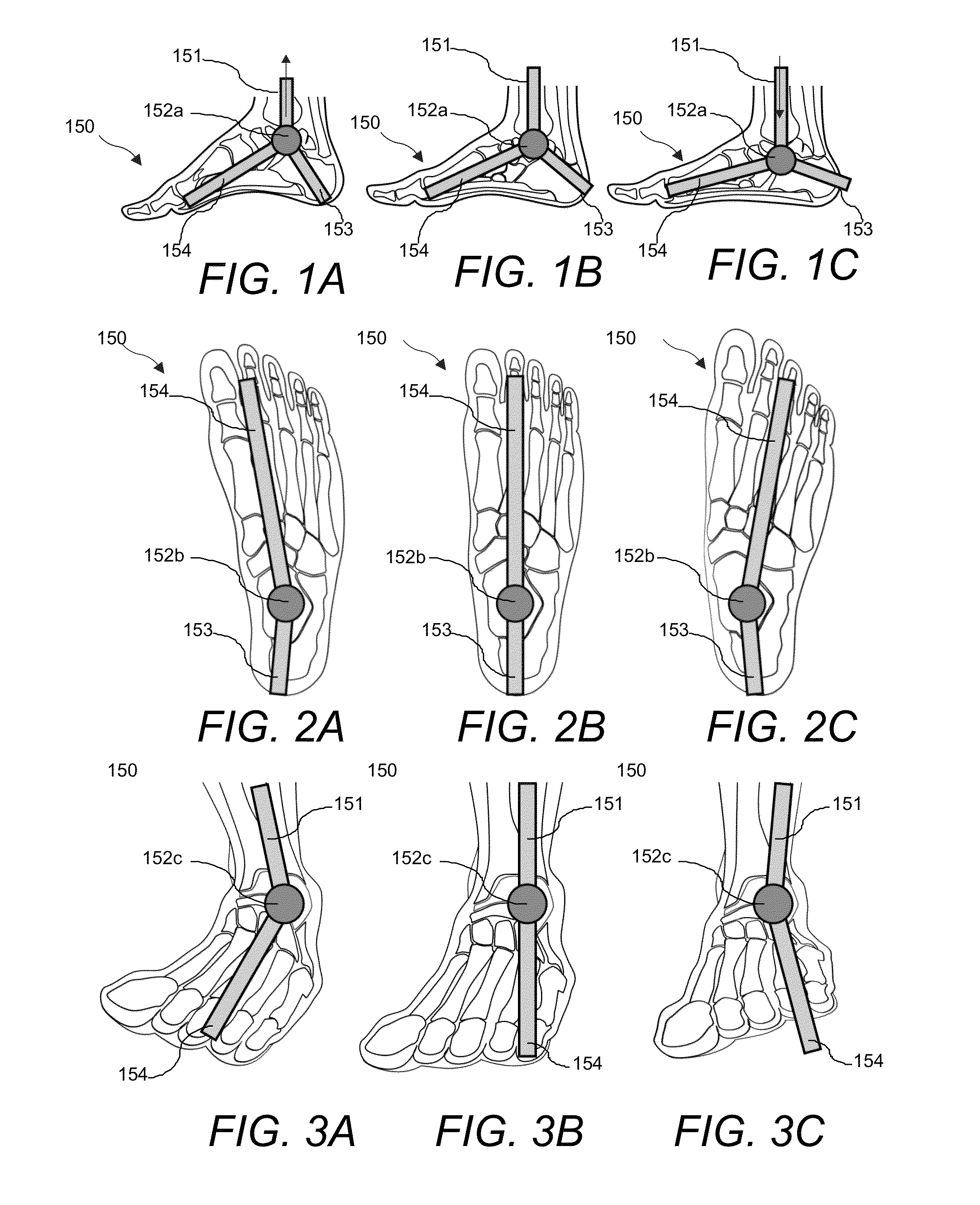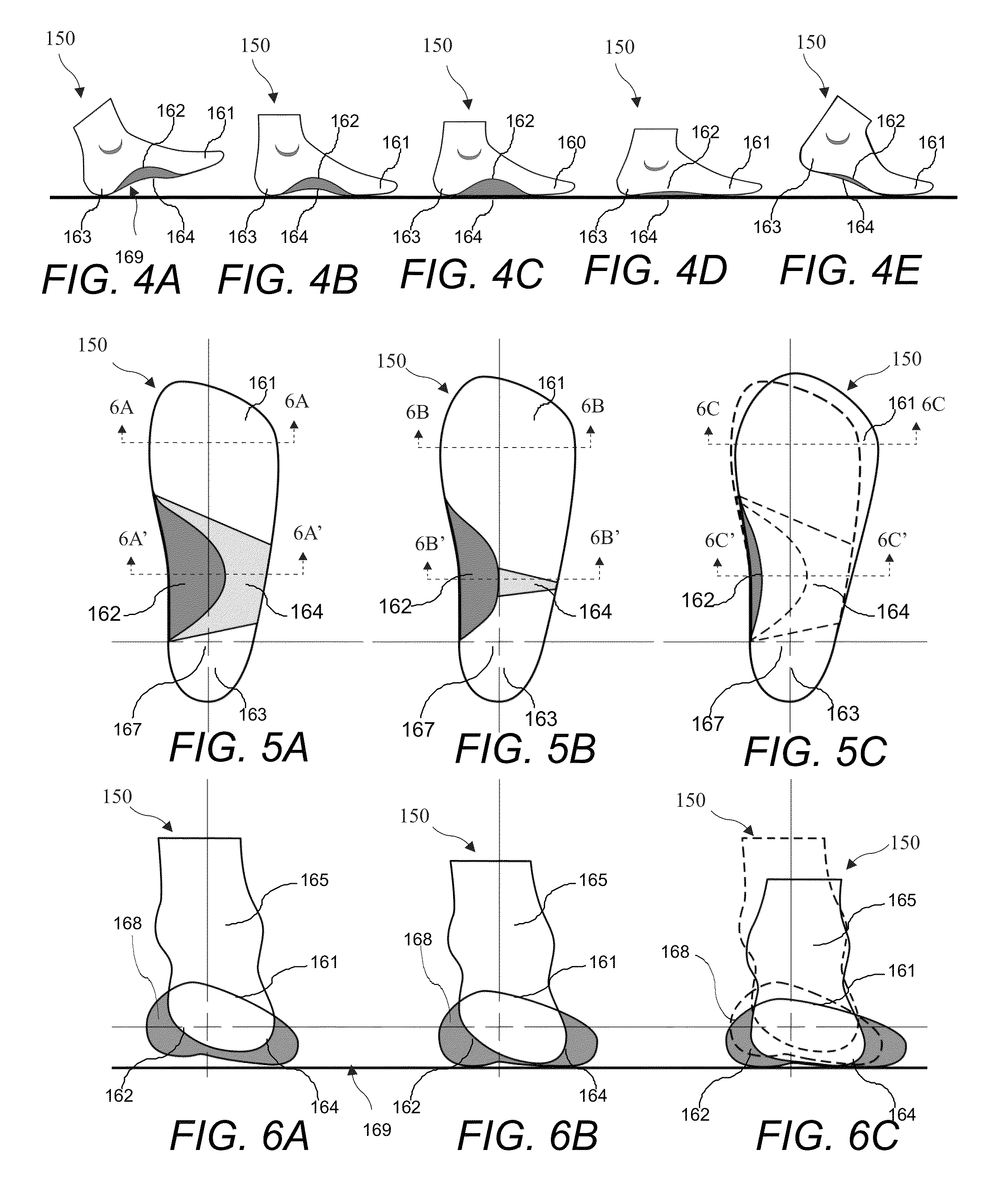Article of footwear with embedded orthotic devices
a technology of orthotic devices and footwear, applied in the field of footwear with embedded orthotic devices, can solve the problems of hindering the ability of outsoles, footwear that cannot fully support the foot, so as to enhance comfort, fit, and utility of footwear, and facilitate the movement of the foo
- Summary
- Abstract
- Description
- Claims
- Application Information
AI Technical Summary
Benefits of technology
Problems solved by technology
Method used
Image
Examples
Embodiment Construction
[0128]The following description is of the best mode presently contemplated for carrying out the invention. This description is not to be taken in a limiting sense, but is made merely for the purpose of describing one or more preferred embodiments of the invention. The scope of the invention should be determined with reference to the claims.
[0129]To create a dynamically supportive motion control sole system one must understand the pronation and supenation motions of the foot during a gait cycle. This sequence of movements describes how the foot flexes and compresses to absorb and support the weight of the body. It should be examined and translated into applicable flexing motions in the sole system of the footwear design. Once understood, the range of flexing motions of the foot can now be fully supported by a sole system tuned to provide progressive resistance in directional flex.
Human Gait Biomechanics
[0130]The biomechanical bone structure movements of pronation and supenation are d...
PUM
 Login to View More
Login to View More Abstract
Description
Claims
Application Information
 Login to View More
Login to View More - R&D
- Intellectual Property
- Life Sciences
- Materials
- Tech Scout
- Unparalleled Data Quality
- Higher Quality Content
- 60% Fewer Hallucinations
Browse by: Latest US Patents, China's latest patents, Technical Efficacy Thesaurus, Application Domain, Technology Topic, Popular Technical Reports.
© 2025 PatSnap. All rights reserved.Legal|Privacy policy|Modern Slavery Act Transparency Statement|Sitemap|About US| Contact US: help@patsnap.com



